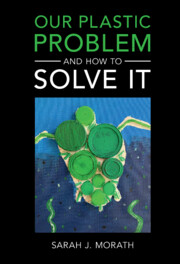Book contents
- Our Plastic Problem and How to Solve It
- Our Plastic Problem and How to Solve It
- Copyright page
- Contents
- Acknowledgments
- Abbreviations
- Introduction
- Part I Plastic in the Environment
- Part II Multimodal Approaches to Solving Our Plastic Problem
- Part III Innovation and Design
- 8 Plastic Alternatives
- 9 Plastic’s End
- 10 The Circular Economy
- Index
10 - The Circular Economy
from Part III - Innovation and Design
Published online by Cambridge University Press: 17 March 2022
- Our Plastic Problem and How to Solve It
- Our Plastic Problem and How to Solve It
- Copyright page
- Contents
- Acknowledgments
- Abbreviations
- Introduction
- Part I Plastic in the Environment
- Part II Multimodal Approaches to Solving Our Plastic Problem
- Part III Innovation and Design
- 8 Plastic Alternatives
- 9 Plastic’s End
- 10 The Circular Economy
- Index
Summary
The innovations discussed in Chapters 8 and 9 are at the heart of what has been called the circular economy, that is, an economy focused on keeping materials and products in use, ideally indefinitely, as the waste materials of a used product become the raw material for a new product. Thus, like other economic theories such as cradle-to-cradle and industrial ecology, the circular economy offers an alternative to the linear make-use-dispose economic system. Chapter 10 will discuss the main principles of a circular economy, an economy that “is restorative by design, and which aims to keep products, components, and materials at their highest utility and value, at all times.”
This chapter will also discuss how circular economy principles are beginning to be embraced by both businesses and governments, who increasingly view the circular economy as a way to address sustainability challenges, enhance performance competitiveness and innovation, and stimulate economic growth and development. Proponents of a circular economy regard it not only as a means to conserve and recycle materials, but also as a way to drive new technological, financial, and environmental innovations. In practice, circular economy principles are the essence of zero waste (sustainable development) initiatives that have sprung up across the globe and in the United States at the federal, state, and local levels, and which are increasingly being considered and evaluated by the private and public spheres as a way to address our plastic problem.
The circular economy has become a tool for sustainable development, and as applied to plastic, the circular economic theory aims to transform plastic production, consumption, and disposal into a closed-loop and sustainable system. The topics of earlier chapters – bioplastics and recycling – certainly are compatible with the circular economy. This chapter defines in detail the theory of the circular economy and describes how circular economy principles are being integrated into policy and practice, both generally and as applied to plastic.
- Type
- Chapter
- Information
- Our Plastic Problem and How to Solve It , pp. 187 - 200Publisher: Cambridge University PressPrint publication year: 2022



